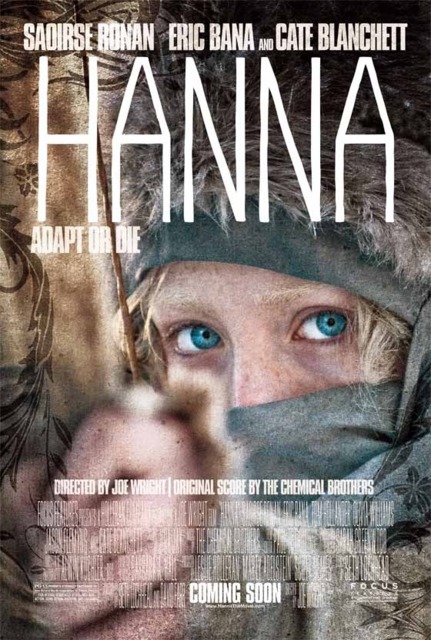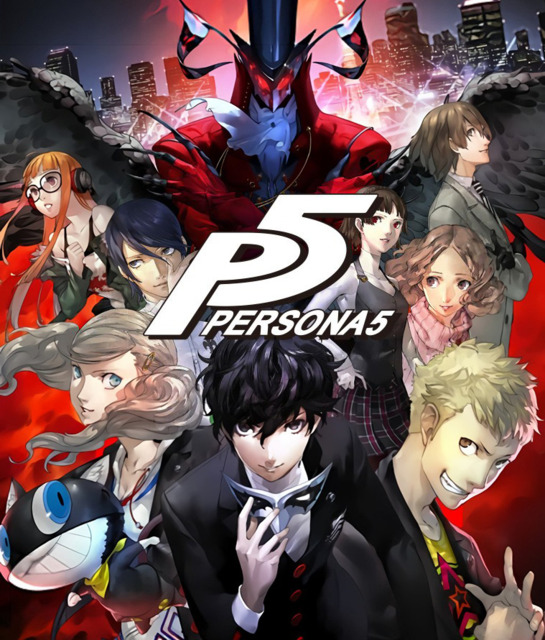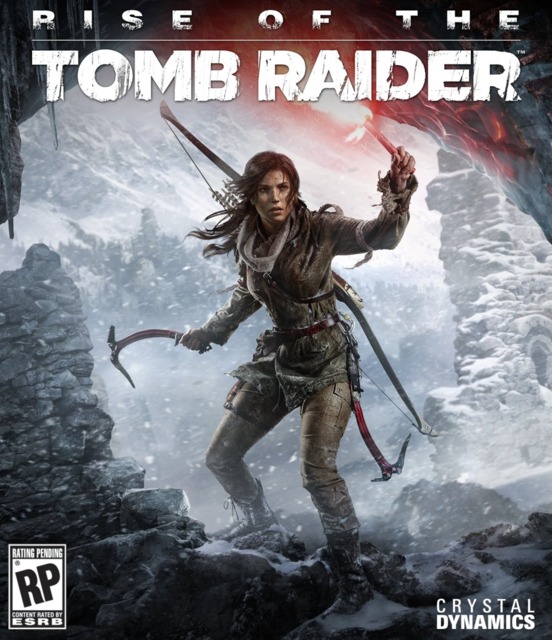Saturday Summaries 2018-02-03: JRPG Phoenixes Edition
By Mento 9 Comments
The North American/European JRPG fan had quite the banner year in 2017 with the releases of Persona 5, Tales of Berseria, Ys VIII: Lacrimosa of Dana, NieR Automata, Dragon Quest VIII (for 3DS), Final Fantasy XII: The Zodiac Age, Xenoblade Chronicles 2, The Legend of Heroes: Trails in the Sky the 3rd, Nioh, and others. If I were to narrow down the most exciting of those, objectively speaking, it'd be Persona 5 and NieR: Automata: my reason being is that they either came from a franchise that seems to put out one new game a decade (Persona), or one that was unlikely to ever see a sequel (NieR).
Not to disregard the many fine workhorse JRPG franchises putting out games every few years like Final Fantasy, The Legend of Heroes, or Tales - I'm still very much looking forward to playing the half of the above list I've yet to get around to - but it did make me think about what I would most want to see suddenly emerge from the deepest, darkest depths of JRPG history. A franchise, long thought deceased, that inexplicably springs back to life with a new entry that, despite the many years since the previous, manages to capture the same magic and retake the empty niche (if not sepulcher, at this point) its long absence left behind.
I've put together a short list below of dormant franchises that I'd love to see make a return, for as impossible a pipe dream as some of them may seem. After all, if NieR - a bizarre, cult game with middling-to-scathing reviews, developed by a studio that folded soon after its release - can put out a GOTY-worthy sequel seven years later, any of the below could theoretically make the same long journey out of video game Yomi-no-kuni with a similar amount of support.
- Suikoden VI: Here we run into the "Konami problem," as Konami is no longer interested in taking anything that resembles a gamble for its game development wing; ironic, given how most of their efforts are being put into literal gambling machines. After 2006's Suikoden V, a high point of the series, it sputtered back to life briefly for 2009's greatly scaled-down 3DS spin-off Suikoden Tierkreis and the as-yet-unlocalized 2012 PSP game Genso Suikoden: Tsumugareshi Hyakunen no Toki ("The Woven Web of a Century") before disappearing forever. A proper sequel, which reintroduces the wargaming aspect that allowed the series to stand out during the busier PS1 and PS2 generations, as well as its trademark of an enormous cast of characters to recruit, would be a welcome surprise if I at all trusted Konami to deliver it.
- Shadow Hearts IV: Shadow Hearts spawned from a gothic, turn-of-the-century (as in, 19th to 20th) Europe-set RPG called Koudelka, and maintained its sort of juggling of world history during the tumultuous time around WW1 with occult conspiracies and the best laid plans of men and the demons possessing them. It also started to get a lot more surreal with its humor as the series went on. Shadow Hearts 1 had a few goofy comic relief characters and villains, but Covenant really picked up on that spark of levity in an otherwise grim and grisly RPG and From the New World perhaps took it too far with Mao, a feline kung fu expert and confidante of Al Capone who wants to be a Bruce Lee style movie star, and the ridiculous elderly American ninja Frank Goldfinger. A hypothetical fourth game could continue ramping up the silliness, or return to the franchise's relatively more somber and ominous roots, but as long as it resurrected the fantastic "Judgment Ring" timing-based combat system and brought back Yoshitaka Hirota for its soundtrack, I'd be all over it.
- Breath of Fire: Now, Capcom's Breath of Fire is still technically active: the sixth game was released as recently as 2016. However, it was a free-to-play browser/mobile game that was universally panned and mercifully spared a localization, so I'm choosing not to acknowledge its existence. As far as I'm concerned, the final game in the series was the very promising hard-left tangent that was Dragon Quarter, released in 2002/03 for the PS2. Dragon Quarter pioneered a certain incremental playthrough system that would find greater success in Capcom's Dead Rising series: the idea being that your protagonist was such a slow learner that it required multiple playthroughs, most of which were manually aborted long before the game's conclusive act, before they could reach a place where they could see their adventure through to the end. Dragon Quarter also dispensed with the franchise's sunny if generic fantasy setting for a more gloomy post-apocalyptic subterranean setting full of themes about the dangers of a society governed by those that claim a literal genetic superiority, and of the sinister side of technological progress and the atrocities that result from same. I'd love to see a sequel that expands on this particular black sheep of Capcom's series, but they're like Konami in that we're very unlikely to see anything "challenging" emerge from that studio ever again.
- Dark Cloud 3: Yes, please. Right now. Dark Cloud forever and ever, a hundred years of Dark Cloud, forever a hundred times, www dot Dark Cloud adventures, every minute Dark Cloud dot com. (I really like Dark Cloud.)
- Some others: Mother/EarthBound (Mother 3 localization when?), Grandia, Mega Man Legends, Wild Arms, and some dang ol' Baten Kaitos.
Anyway, enough dreaming of what might be, and more focusing on what has already been. Specifically, some blogging I did:
- The Indie Game of the Week this time was Affordable Space Adventures, one of a dwindling stack of Wii U games I wanted to see through before I put that thing in storage forever. Affordable Space Adventures popped up when I was researching for an earlier blog - Uurnog Uurnlimited, from last December's "Go! Go! GOTY!" feature - and I'd completely forgotten that I'd already bought it as part of a bundle. Turns out it was a great game I shouldn't have slept on, combining various environmental puzzles with a vehicle interface that allowed you to modify everything from the engine thrust down to the heat shutters. Most of the puzzles involved getting past hostile turrets by lowering heat/energy/sound output to below their detection range, which meant figuring out which systems you could live without for a brief time. A neat idea, and definitely not a feature I've seen used in this particular context.
- It was another week for the HOPAs, with the second episode of Rainy Days and Mundis. The test subject this time was Sunward's The Myth Seekers: The Legacy of Vulcan: an Indiana Jones style 1920s treasure hunt featuring the Roman gods. A few of my hypotheses are starting to see validation, but I think I still check out a few more of these games to see how closely they all stick to the same blueprint. At least I'm not having a terrible time with them? Even at their most generic, it's still some comfort-food casual gaming.
Addenda
Movie: Hanna (2011)

With Irish-American actor Saoirse Ronan making headlines of late with the well-received Lady Bird, I was inspired to try an earlier movie of hers: 2011's Hanna, the spy thriller in which a highly-trained teenage girl assassin raised far from civilization gives in to her desire to see the rest of the world and announces herself to the CIA, who has been trying to find her and her father (Eric Bana) due to their links to an old, clandestine genetic engineering project that wasn't entirely expunged. It's sort of a cross between the Jason Bourne movies and Kick-Ass, where you regularly have to wonder the kind of lasting damage teaching a tiny girl how to kick adults really hard will have on her developing psyche.
The movie has a very strange energy on top of that. Hanna bounces around Europe after waking up in Morocco once the CIA picks her up, fighting her way out of their secret facility and falling in with a slightly obnoxious but endearing British family on vacation as she makes her way to Berlin to meet her father at a pre-determined location. She's being chased by a German assassin played by Tom Hollander, who has sort of this pansexual artist vibe as well as being a really sick piece of work as far as torturing witnesses goes, as well as Cate Blanchett's senior CIA agent character, who was in charge of the project in question and the one who originally killed Hanna's mother. The cat-and-mouse routine lasts for the whole movie, but it takes some odd detours as Hanna adjusts to life in urban locations - she was raised in the arctic wilds of Finland for the sake of keeping incognito - and flirts with being a regular teenager. The movie is scored throughout by the Chemical Brothers, giving the movie a sort of Run Lola Run vibe as the various running and action scenes throughout picturesque areas of Europe are enhanced by this EDM/synth backing.
It definitely wasn't the movie I was expecting. I got as far as "little girl kills a bunch of people with knives, guns, and bows" but wasn't quite prepared for the atmosphere it had. Despite its distinctive flair, it's not a particularly deep movie nor does it really attend to its own internal logic or explore what Hanna intends to do after she has escaped the CIA on her tail, but it was equal parts suspenseful and exhilarating with a few curious narrative choices - depicting Blanchett's agent as a sort of sympathetic figure as she struggles with her lack of family and encroaching middle-age, almost subtly implying she had to give up her ovaries for the "les enfants terribles" style super-soldier project that Hanna was borne from - to set it apart from all the functionally identical continental chase thrillers. Ronan was pretty phenomenal for her part, too: though she spends most of the movie as a bemused waif out of her element, there's some steely and almost creepily detached determination for those vicious combat scenes. She was 16/17 when they made that movie, though, so it wasn't really the showcase of a child actor prodigy that I had earlier assumed.
Game: Persona 5 (2017)

I'm struggling to put all my thoughts in place when it comes to Persona 5. I admire it for taking as many risks as it did, but I'm not sure they all paid off. The Palaces are a fine example of what I'm talking about: when you're running around that first Palace, based on the twisted cognition of villainous and abusive Phys Ed teacher Suguru Kamoshida, it's an exciting development because the dungeon has been carefully designed - with puzzles and set-pieces, even - rather than a series of randomized dungeon floors. While I have nothing against procedural generation, the dungeons in Persona 3 and Persona 4 were often the busy work between the fun parts - the social links and life-sim development stuff - and I was psyched to see so much work put into their creation this time around. Unfortunately, that enthusiasm started to drop off towards the end of the game, as dungeons either became far too focused on obnoxious and time-consuming (but not necessarily difficult) puzzles or being far too long for their own good. Or, in one particular case, both.
Similarly, I loved exploring the new setting - Tokyo, with various districts like Shibuya, Akihabara and Shinjuku - and all its new amenities, but didn't care quite for the rogue's gallery of social links (now called Confidants) as much as I did for the eccentric folk of small-town Inaba. There were highlights of course, like the goth doctor Tae Takemi or your overworked homeroom teacher Sadayo Kawakami with her whole second life, and I really appreciated how each social link offered something tangible beyond boosted Persona fusion XP: in the above examples, Takemi let you buy expensive but powerful healing consumables, while Kawakami had various ways of increasing the amount of free time you had available for other pursuits. Persona 5 was full of instances like this, where you'd despair of where it falters when compared to Persona 4 while still enjoying the number of significant improvements to quality-of-life conveniences and gameplay features. I'd hate to say that Persona 5's strengths were purely superficial - the style and music were definite highlights, mind - because it does do a huge amount of work improving the fundamental gameplay. At the same time, and for as much as I still loved it and was sad to see it end, I'm still not sure if I'd rate it as highly as 4 or even 3. Could well be a case of diminishing returns of the format on top of everything else.
Before I move on, I just still want to reiterate that Persona 5 - like most of the Persona games in recent memory - is absolutely at the peak of its genre. All the above is like arguing how much the last Zelda was a letdown (well, bad example given the last Zelda game, but pretend we're still in the Twilight Princess/Skyward Sword era) when it's still head and shoulders over most of the competition. I'd recommend it in a heartbeat, regardless of your experience - if any - with the series, and it'll still rank highly when it comes time to re-evaluate my 2017 GOTY list in the near future. That it's a few shades short of what it could've been is almost academic.
Game: Rise of the Tomb Raider: 20 Year Celebration Edition (2016)

I'm only a few hours into RotTR so this'll be a short recap, but I was slightly amused by the coincidence that both this game and Hanna, above, start with a young heroine hunting wildlife with a bow in the frozen tundra while learning multiple languages in her downtime, like that's a super easy thing to do while you're trying to keep warm. I originally missed out on the new adventures of Ms. Croft because it was an Xbox One exclusive for a while, and then I waited my usual requisite period of time after the release of the PS4's "20 Year Celebration Edition" (another weird coincidence, as Persona 5 also has a dedication to its respective franchise's 20 years of existence) before it dropped to an acceptable price. I didn't want to delay a playthrough any longer, since the next Tomb Raider can't be too far off, and I needed something relatively short to fill the gap between a 100+ hour run of Persona 5 and an upcoming 100+ hour run of The Legend of Zelda: Breath of the Wild (which I really need to play) besides. So here we are, hunting bears and stags in the Siberian wilderness while looking for treasure.
I think the developers of the Tomb Raider games recognized the necessity of creating some distance between what they were doing and what Naughty Dog were doing with the Uncharted games, even if the latter appears to have ceased production for the time being. As such, there's a much heavier emphasis on stealth and crafting here, as Lara is invariably better off avoiding direct combat with the well-armed antagonists on her heels - in this case, a sinister clandestine Christian-based sect named Trinity - while being mindful of the hostile wildlife and environment. Lots of collectibles, lots of hemming-and-hawing over what skills and upgrades to acquire next, lots of puzzle-solving in tombs and precarious climbing - I'm looking forward to what's to come, and even though I'm playing on the second highest difficulty for the sake of trophies (yeah, yeah, I'm still a sucker for those things) I hope it's a relatively breezy adventure that won't outstay its welcome. I could use the breather after the mentally and emotionally exhausting Persona 5.
Though, I have to ask: was it really necessary to bring back the gory death scenes whenever she falls into a trap or failed a QTE? Those things turned my stomach a little in the previous game, not to mention being just a tad gratuitous.
